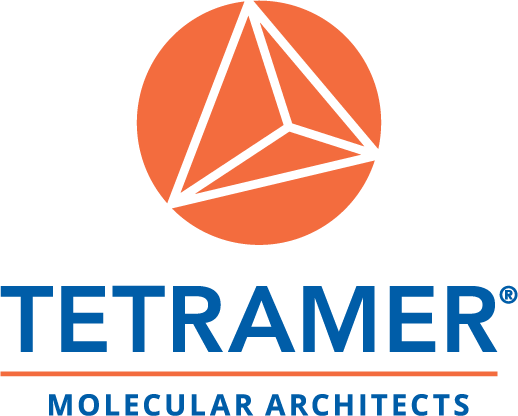Toyota, Honda, and Hyundai are all entering the multi-billion dollar global automotive fuel cell market, which is currently dominated by Proton Exchange Membrane (PEM) technology. PEM fuel cells are the technology of choice for car manufacturers, and are found in many other industrial applications. However, PEM fuel cells require high levels of humidity and hydration in order to run at maximum efficiency. Realizing the technology would need to be evolved in order to have mass applicability in the industrial sector, the Department of Energy (DOE) turned to the small business community via the Small Business Innovation Research (SBIR) program for a solution.
Tetramer Technologies won a Phase I award for its response – a Water Vapor Transport (WVT) membrane technology that showed promise to increase efficiency of fuel cells while lowering costs. This chemically and thermally stable, high performance WVT humidifier results in a lower weight and smaller footprint PEM engine stack with a reduction of cost and weight of the entire balance of plant. Compared with current commercial materials, Tetramer® WVT membranes have demonstrated 30% performance improvement, 50% cost reduction and improved chemical stability. After the successful completion of Phase I and II with the DOE to evolve its WVT technology, Tetramer has signed on with a large industry partner and has also secured Phase IIB SBIR funds to bring the technology to market.
“Our first SBIR with the National Science Foundation (NSF) resulted in a partnership to work with General Motors for five years on the design of a new PEM fuel cell membrane,” recalls Jeffrey R. DiMaio, Ph.D. and COO of Tetramer. “We have taken that original technology, changed the molecular architecture and leveraged it to develop the WVT technology through SBIRs with the Department of Energy, and we are expected to commercialize that technology by 2019. The SBIR program is great opportunity to advance the high tech industry within South Carolina and provides a mechanism for funding high risk, high reward technologies even if you are not in Silicon Valley.
The company’s history with the SBIR program spans various agencies, but Tetramer has remained focused on the development of advanced materials through the design and synthesis of unique molecular architectures that meet the desired properties of customers. Formed as a spinoff from Clemson University by 4 faculty professors in 2001, Tetramer has leveraged ingenuity, along with federal funding and state support, and industrial joint development programs to grow to 30 employees (from 3 originally) with positive cash fland no debt. Tetramer is fully independent, having no venture capital or equity investment, leaving it’s members free to fully focus on its customers’ commercial development unmet needs.
Tetramer also boasts a suite of tamper-indication thin film coatings that have vast potential in the defense sector. Tetramer provides a range of materials from polymers and polymeric nanocomposites, to ceramic sol gel coatings, which provide unique tamper-indicating mechanisms to its government customers. In other work, Tetramer is collaborating with Clemson University’s Optical Fiber Laboratory to develop high temperature coatings for the fiber optic industry with an eye on commercialization in the next 6 months through an NSF SBIR program.
In an unrelated but highly sought-after application, Tetramer is working with partners on the development of technologies that will lead to new options for improving the nutritional properties of foods people like to eat and helping to solve the obesity problem in the US. As with many University startups, the natural symbiotic relationship continues to have many mutual benefits. Tetramer actively recruits graduates from Clemson University, and the company continues to give back to its alma mater.
“Being close to Clemson University has been critical to Tetramer’s success,” says DiMaio. “From our initial start in Griffith Building incubator to having access to high quality students and graduates, Clemson has provided resources that allow a high tech company to succeed. When recruiting scientists to Tetramer, employees are always impressed when they visit the area by the low cost of living, the moderate four-season weather and outdoor activities. The city of Greenville and Clemson University are all major draws which allows us
to bring the best to the state.”
The research and development of advanced manufacturing is a key emphasis area for Clemson University, and Tetramer has helped by providing training to both students and small businesses in the areas with research and development, technical career development, entrepreneurship, and business operations. Early on, Tetramer also worked with SC Launch, which is a state program that has provided matching Phase I funds and equipment grants to the company. Through an NSF SBIR Phase IICC supplemental funding opportunity, Tetramer was able to give Tri-County Technical College $30K to help train students on computer integration for fiber optic test assembles. Says DiMaio, “When the state, county, university system, and business all work together, everyone can benefit. It’s not just about attracting new companies into the state, but also about retaining existing companies. The state of South Carolina and Anderson County have aggressively done both.”
As for future product development, Tetramer will continue to utilize the SBIR program in order to bring niche applications to a wider audience.
“With high value materials development, the life cycle of idea to commercial product is on average six years,” explains DiMaio. “And many investors are not that patient. So we use the SBIR program to say, here is a material need for specific application, and we will develop that material. Tetramer’s business model is to then expand the use of that material into new applications and markets through industrial partnerships. Tetramer brings high risk, high reward materials into existence with the help of SBIR and then broadens the market value of those materials through industrial partnerships.
Original article written by Julie Scuderi and published on SBIR.gov


